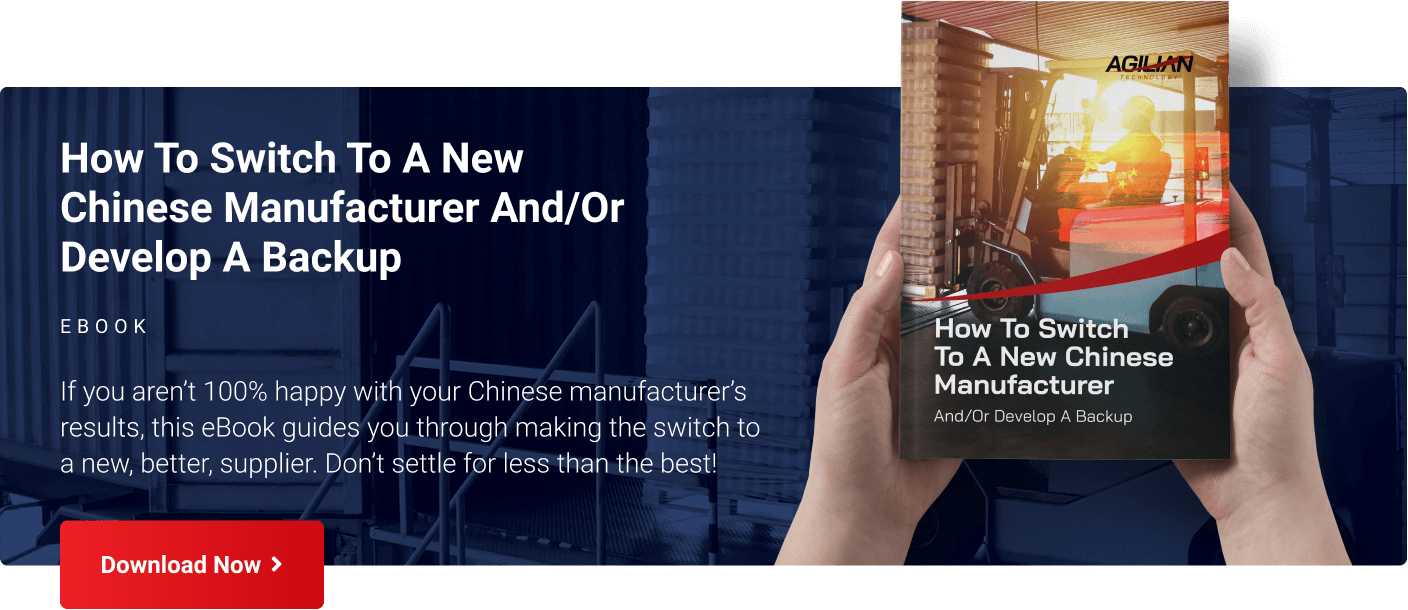There are many reasons for importers to find new product development in China difficult, and the more customized and complex the product, the more difficult it tends to become.
Delays, especially, are very common, especially for less experienced importers’ products. There have been horror stories of crowdfunded projects being 6 months or more late (in fact, 84% of Kickstarter’s top projects shipped late), and you can only imagine how the backers would feel about the company if that happens!
Delays can be very damaging, so here are four tips that could help you reduce the risks of being delayed and save time during the development and production process.
1. Try hard to simplify your product
Let’s say you have an idea for a new product. You ensure there is a pain point to solve, you can reach those potential customers, and they are willing to pay for the fix.
The very next thing to look at is usually ‘Can we simplify the product concept’?
John Teel gives a neat example of this in Why You Must Simplify Your New Product Idea To Succeed:
The product itself was fairly simple, but it was using a wireless charger to charge the product’s battery. That wireless charger would also need to be custom developed. This magnifies the complexity of the product tremendously.
He also wanted a pretty complicated custom wireless charger, that included motors to align the device being charged.
You need to have the two coils aligned together to be able to transfer the power wirelessly. These motors further complicated his design, since mechanical parts are difficult to get right and are prone to failure.
So now this entrepreneur is developing not one but two products. He’s developing his core product and a custom wireless charger.
Getting rid of the wireless charging function allowed him to save a lot of time and money (probably over 100,000 USD in the mid-to-long run) by not having to:
- Develop a second PCB
- Pay for the mold of that second enclosure
- Pay for certain certifications
Once version 1.0 of the product is successful on the market, no doubt that founder can go back to the original idea and develop a wireless charger, if (and that’s a big if) it appears to be the best way to improve the product, based on the feedback of real customers who purchased and are using the product.
2. Select a suitable manufacturing partner
It may be tempting to go for a recognized manufacturer who works for big brands like Walmart, Apple, Sony, etc. However, selecting on size and reputation alone may not always be the best choice, even if the manufacturer produces top-quality products.
Many SMEs and entrepreneurs aren’t placing huge orders to start with. Often their product isn’t too complex either, as it’s a good practice to keep V1.0 products fairly simple and iterate them in later versions once you have gained traction in the market.
If that’s the case, a smaller manufacturer with hundreds rather than thousands of staff would probably be a better supplier for you, especially if they have experience in your product’s niche and the production processes you require. They’ll be grateful for your business and will reward you with more flexibility, more attention, and perhaps better pricing. Of course, they may not have the pool of expertise of larger manufacturers.
The larger organization, however, is less likely to be as flexible. Your order, if they accept it at all, won’t be a priority for them, so they may also put their ‘B team’ (less senior staff) on your project as well as being unlikely to provide more competitive pricing.
Vetting your supplier is critical here, in order to find a good fit. This podcast series from Sofeast about how to vet Chinese suppliers might be helpful for you. At the same time, identify and cultivate a backup supplier in case problems occur, as finding a new supplier can take several months. Could your business last for that long with no supply?
We’ve created an eBook about how to switch to a new supplier and/or develop a backup supplier – download it here:
3. Put pressure on the factory by going on-site
You may send a staff member of contract a third party inspection agency to visit the factory during prototype sampling and production.
This provides the following benefits:
- You don’t wait for feedback as it’s the information you need about the products is right in front of you immediately
- Issues with the products are found early and can be dealt with straight away while everything is fresh in the supplier’s minds and long before the products ship
- The factory feels compelled to get on with your project and not leave it on the back burner in favor of other projects (that can happen if other customers are more insistent than you or they’re more lucrative than yours)
- It keeps the supplier engaged and less likely to move on to ‘newer, shinier projects’
An example of how this works would be sending an engineer to the supplier’s factory to check the sample prototypes. They can review them and either sign them off as good to go or request changes there and then. This will cut the very large corner of sending samples back and forth to, say, the USA from China and waiting for feedback before finally moving forward. That process could add weeks to new product development in China and its subsequent manufacturing.
4. Devise appropriate shortcuts where prudent
Plan out the entire project holistically and once you can see each step the next step is to decide if there are points where a time-saving shortcut is possible.
Software can be used to create your project plan and show it visually in a Gantt chart.
Make the product development and launch plan S.M.A.R.T (Specific/Measurable/Assignable/Realistic/Time-Based).
All parties need to be made aware of what’s expected of them and by when. Then, by micromanaging the tasks and timelines it’s possible to notice fairly quickly if the project is starting to fall behind schedule.
When you can see the whole project plan it’s time to consider where taking a shortcut may be advantageous and wise. This varies per project, but here are a few examples:
- Delaying lab tests until production – if you’re more certain that the products are sound testing as production is underway shaving time off of the development process. The risk here is what happens if non-compliance is found? Then production will need to be stopped while the product is fixed.
- Skipping the pilot run before mass production in order to ship sooner – this is a risky shortcut and could backfire if issues are found in the first production batch. Instead of a small number of pieces that would need to be scrapped or reworked, you’d be facing a lot more work and expense. Many Chinese manufacturers like to skip the pilot run and push on to mass production because it will help them ship sooner.
Remember – Shortcuts often carry risks!
Getting to market faster has many benefits, that’s undeniable. However, skipping tasks or rushing during new product development in China often causes mistakes, poor quality, and, ultimately, more trouble than they’re worth. Instead of receiving products faster, you may end up with larger delays and costs to swallow.
For example, one customer was looking to carry out FCC tests to certify their Bluetooth product. A well-known international testing lab quoted them four to five weeks to do the test and provide the report. However, they didn’t think this was quick enough, so we found an alternative lab that quoted only one to two weeks. As a smaller lab, we told them it might be riskier as it could be less reliable, but they went ahead with it anyway and ended up paying twice as much as the ‘big’ lab (including a rush fee)… And in the end, it took six weeks to complete, so was even longer!
Another example is product packaging. Many importers consider it to be somewhat of an afterthought, leaving thinking about it until the last minute. After all, it’s not as important as good quality and compliant products, right?
However, while leaving the packaging up to the supplier and not specifying what’s required by making the assumption that ‘they’ll package it properly’ might save you time, it also gives them a green light to select the cheapest and sometimes unsuitable packaging. Once the goods have been shipped most suppliers have been paid, so if you receive multiple crushed boxes and damaged products they may not be too concerned about your complaints! So looking back, the time spent on researching suitable types of packaging, testing that it provides the right protection, and specifying that to the customer would appear to be worthwhile!
Conclusion
One thing many entrepreneurs and SMEs consistently fail to appreciate is how complicated and full of risks a thorough new product launch is, as we wrote about on Sofeast before.
New product development in China, manufacturing, and shipping will always come with unknowns and risks, and these increase in line with the complexity of the product you’re making. That’s a guarantee.
However, it’s possible to save time if you’re careful and take calculated risks.
It’s also possible to reduce the chances of unpleasant surprises occurring, by going through a thorough vetting process and playing a hands-on role in the new product development and manufacturing process.
Finally, if you are stuck and need help to get your new product concept from paper to mass production we can help you as we’re a contract manufacturer with an in-house product R&D department and decades of experience in new product development in China and mass production, especially for electro-mechanical and other consumer products. Learn more and get help here.





